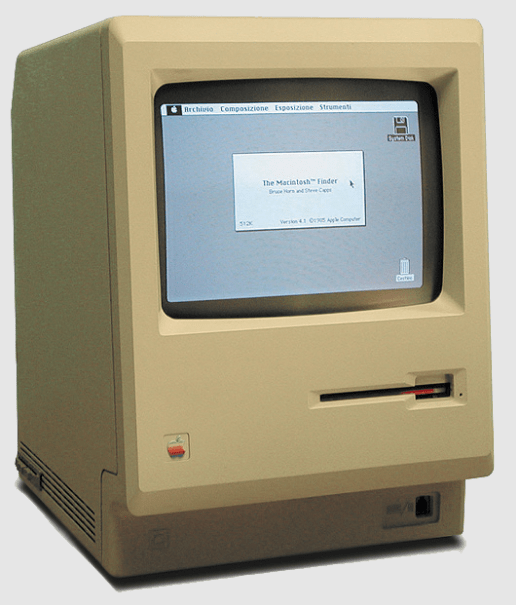Over three decades ago, Apple changed the face of the technology industry after it released the Macintosh, the world’s first commercial personal computer, in 1984. Known for many other innovations, the company and its creative team yearned to have a computer meant to be used by “normal individuals in the street” and not only by professionals or experts. Thus, the birth of the Macintosh PC. As the hardware got updated, Apple Wallpaper became a popular enhancement to the overall main screen look.
For the first time in history, the computer featured a GUI (graphical user interface) system and a mouse that would later spark the creation of the Windows OS. In this article, let’s know about the Apple Macintosh that kick-started it all and how its “hello” has significantly impacted the laptops and PCs people use today.
The History of the Macintosh
In 1979, New York scientist Jef Raskin joined Apple and deemed that computers must be low-cost and easy-to-use to attract the average consumer. After the Apple Team saw the GUI (graphical user interface) in Xerox’s PARC facility, he believed that the same dependence on graphics rather than text input, plus the use of a keyboard and a mouse, will finally sell computers to the masses.
In September of the same year, Raskin was tasked to handle the project and start building a team of skilled people. Bill Atkinson, a computer engineer and principal developer and designer of Apple’s Lisa, introduced him to Burrel Smith, who had joined Apple earlier in the earlier as a service technician. The Apple Lisa is another computer being developed at that time, but it was more high-end and was intended for individual business users.
With Raskin, Atkinson, and Smith at the helm, the Macintosh team developed and designed the Macintosh software and hardware. Burrell Smith created the first Macintosh board powered by a Motorola 6809E microprocessor, with 64 kilobytes of memory, 5 megahertz (MHz) speed, and enough to support a B&W 256×256 pixel bitmap display. The prototype’s speed was boosted to 8 MHz, while its display support was improved to 384-256 pixels. Its final specification featured a 128 KB RAM (expandable to 512 KB), 64 KB ROM, and a 512×342 monochrome display.
In October 1983, Apple officially announced the Macintosh to the press and released it on January 22, 1984. Its launch was momentous as it was done through a 30-second commercial during the Super Bowl. The ad costing $1.5 reached about 90 million who were watching America’s biggest television event.
The marketing for Apple’s Macintosh touted the operating system’s ease of use. At a time when other PCs were command-driven using text prompts, the Macintosh was graphically based and required the use of a mouse for navigation. It was a breakthrough, as other companies then followed suit and abandoned the dependence of the text-coded commands.
To highlight its interface, the OS came with two applications, the MacPaint, a raster graphics editor, and MacWrite, the word processor. As the new OS veered away from the text-coded system, it required applications to be reprogrammed to fit the new GUI style – a task that many software developers found to be “draggy” and didn’t partake in. As such, there was not enough software for the Macintosh.
Other restrictions of the Macintosh also became apparent. First, the Macintosh’s memory was too little. While it was expandable, it was difficult to do so as it didn’t have an HDD, nor was it easy to add one to the personal computer.
At 128 KB of memory, it was described as deplorably slow, compared to other PCs in its time or to the other Apple product, Lisa, which had 1,000K RAM. The world was never ready for a not-so “un-upgradeable” PC as people would seek to add more memory whenever they felt like it, especially when the prices of additional memory dropped.
The Macintosh also cost $2,495, which was costlier compared to PCs of the earlier generation. As Apple saw the problems with the first Macintosh, they improved it and released the Macintosh Plus on January 10, 1986. It now featured 1MB of RAM, and a SCSI parallel interface, which allowed up to seven peripherals to be added to the PC.
However, all the upgrades placed the Macintosh at a selling price of $2,600. It was difficult for Apple given that other companies like Commodore and Atari also released cheaper units, which also featured the GUI and a mouse, and sold pretty well initially. Fortunately, Mac Plus was still able to gain momentum and registered better reception than the first version. It remained in the market until October 15, 1990, which was the longest-lived Mac in the company’s history.
Apple was able to take a good share of the market from the second half of the 80s, but only to dwindle as the consumer market favored the MS-DOS and Microsoft Windows OS running on IBM personal computers. Though the first “hello” of Mac didn’t translate to the massive success its rival had achieved, no one can argue that it has pioneered the GUI design of modern personal computers, the mouse, and the many standards of personal computing we have today.

